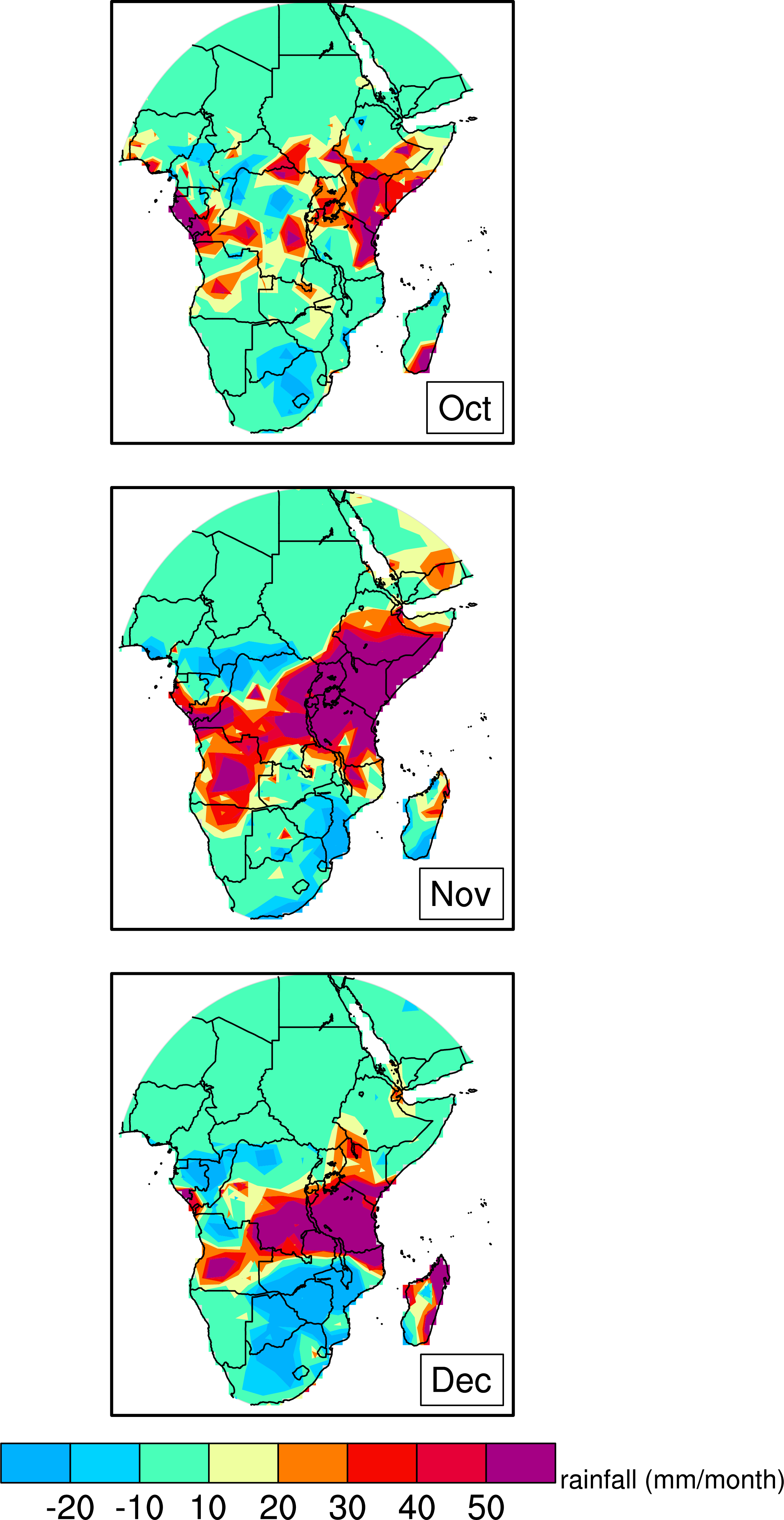Real-time IOD monitoring at IOD Monitor
Questions and comments may be addressed to Saji N. Hameed by email (saji'at-mark'u-aizu.ac.jp) or from my ResearchGate page
How will IOD impact Equatorial East Africa?
It is easy to answer what the impacts of IOD are on equatorial East Africa. However, the question as to when and how different areas within this large region will be affected is difficult to answer.
From the characteristics of a positive IOD event, we can see that large areas of equatorial East Africa will experience heavier than usual rainfall during the last three months of the year. This happens as warm SST anomalies developing over the central Indian Ocean expand and reach the seas near the eastern coast of Africa. The warm SST anomalies along with the redistribution of atmospheric circulation brought about by IOD results in large rainfall anomalies over the western Indian Ocean that spills over into eastern Africa.
We can get some idea of which regions are more likely to be affected by examining rainfall patterns during past IOD events. Such an analysis is presented below. Here, I have considered the average rainfall anomalies over Africa during the 4 IOD events of 1961,1967, 1994, and 2006. These IOD events were chosen since these events are very similar in character to the ongoing event. The rainfall data that I used is from the GPCP project, and anomalies (departure from a long-term average) are shown.

We can see that almost all of Kenya is affected from early autumn, with IOD impacts also impacting southern Somalia, northeastern Tanzania, and parts of Uganda. Intriguingly, Gabon situated farthest from the Indian Ocean seems to experience heavier than normal rainfall during IOD events.
By November, the IOD impacts are much clearer. The impacts are well established and cover all of equatorial East Africa with a clear extension to the west, crossing Congo to reach Angola and parts of Namibia. During this month, rainfall is decreased over the south eastern regions of Africa.
The regions affected by IOD again shrink during December, consistent with the weakening of IOD itself. However, equatorial Eastern Africa continues to experience abnormally high rainfall, while regions in the southeast which were experiencing less than normal rainfall expand.